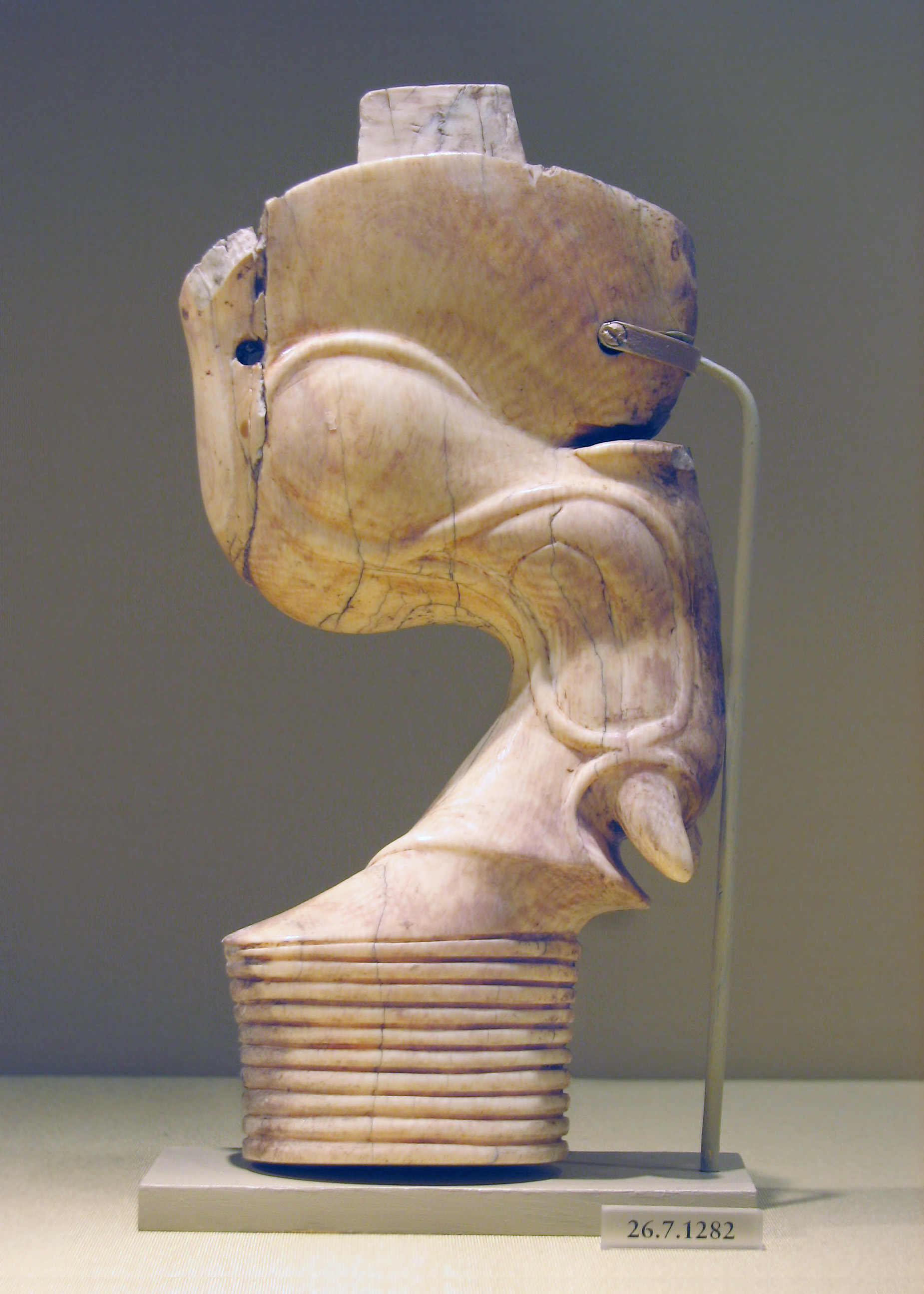Similar ivory bull legs were also found at Heirakonpolis (aka Nekhen).
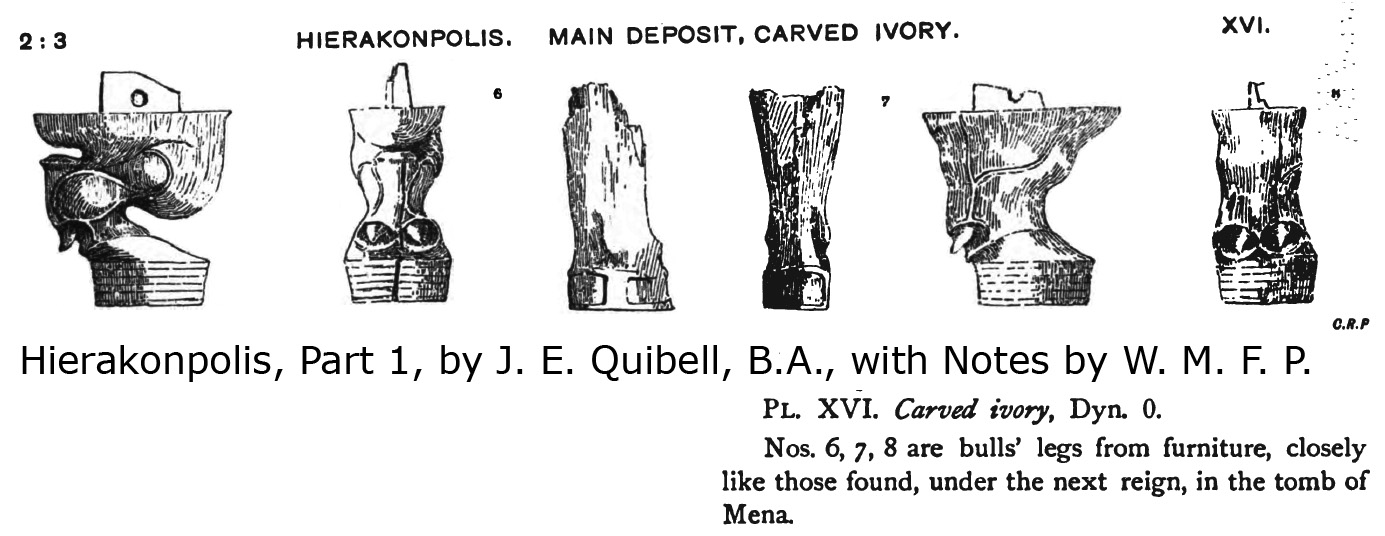
PL. XVI. Carved ivory, Dyn. O.
"Nos. 6,7,8 are bulls' legs from furniture, closely like those found, under the next reign, in the tomb of Mena."
From _Hierakonpolis_, Part 1, by J. E. Quibell, B.A., With Notes by W. M. F. P.
I found many fragments of ivory bulls' legs illustrated in Petrie's _Royal Tombs of the First Dynasty, part II_. There were two in perfect shape, however Petrie identifies them as being from the tomb of Zer-ta:
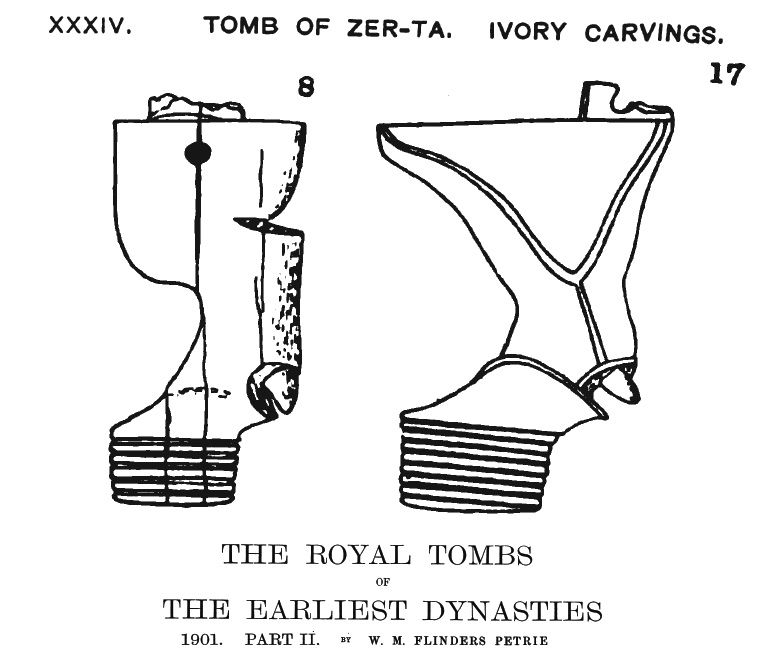
By matching up the serekhs with a more recently photographed example, I find today's Egyptologists refer to this king as DJER, who was buried at what we now call Umm el Qa'ab in Abydos.
Later, after I'd visited the Boston MFA, I recognized the leg numbered "8" in Petrie's drawing:
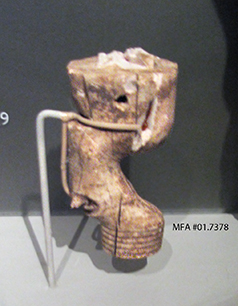
Djer's furniture leg
Yet our discovery doesn't end here. I've located an ivory bull's leg similar to #17 in Petrie's book at Chicago's Oriental Museum, via Before the Pyramids: the Origins of Egyptian Civilization. The authors of 'Before the Pyramids' say Petrie 'published' their leg. But their leg is said to have come from Semerkhet's tomb, a different First Dynasty king???
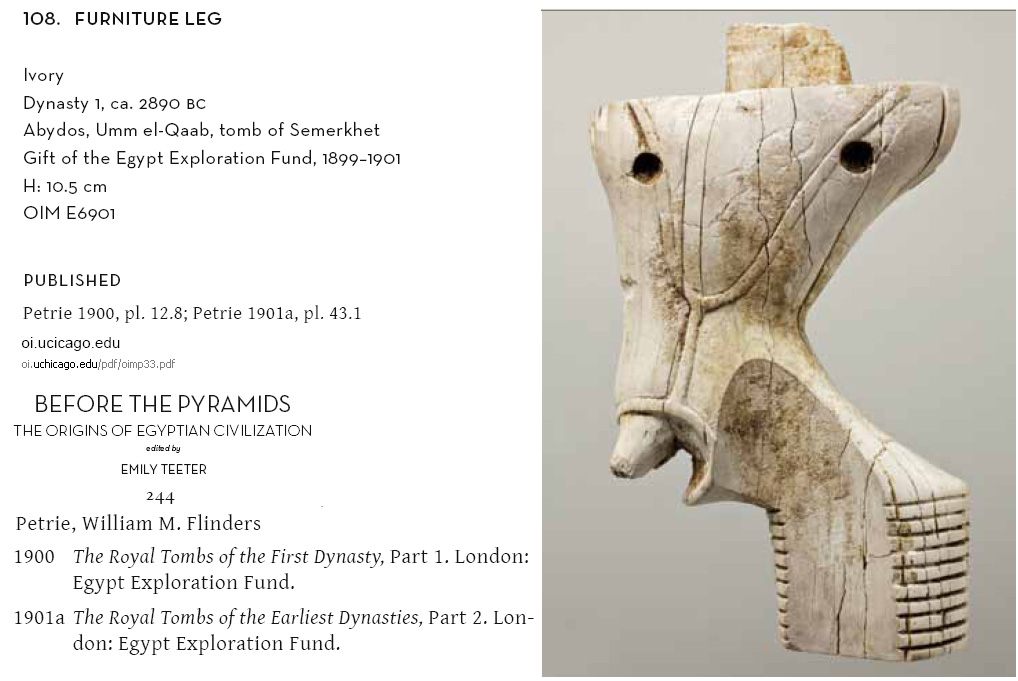
The leg identified as that of Semerkhet is in the first part of 'Royal Tombs', along with another ivory leg, on plate XII. (Also, one or both of the legs identified as belonging to Zer-ta (Djer) may be at the Fitzwilliam museum, acc. #E.46.1900, also E.47.1900, tomb not identified.)
These legs are turning up everywhere! The museum at Rhode Island School of Deaign has one too:
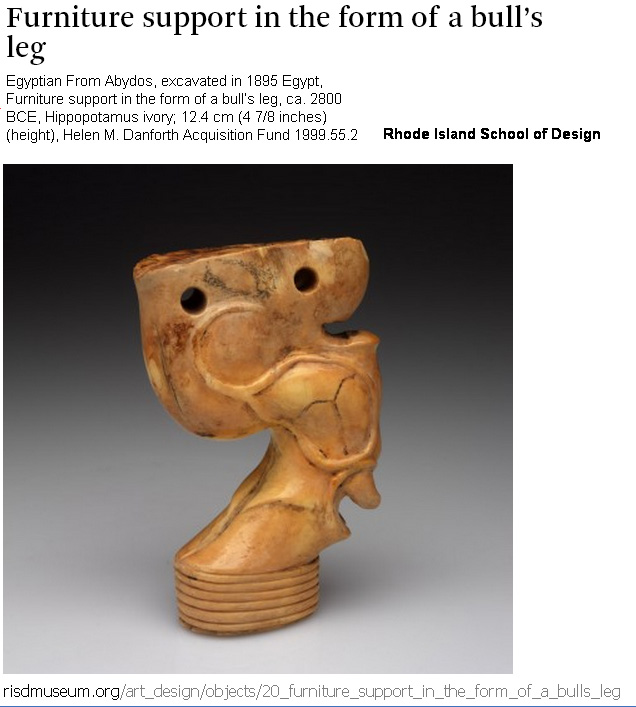
One of the school's faculty members explains about this piece (and all these bull's legs) as a symbol of power.
|
